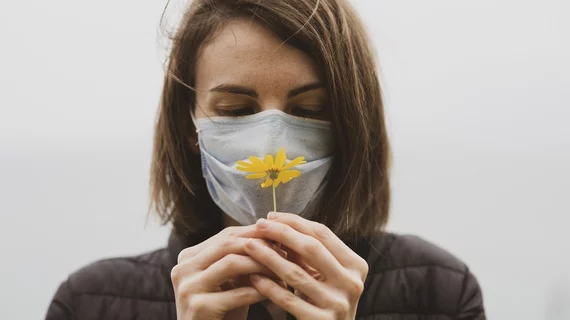Testing smell, rather than fever, may be radiology practices’ best bet for screening patients
Across the country, radiology practices are checking patients’ temperature as a way to screen for COVID-19 before entering. A growing group of scientists, however, believe smell tests might be a better indicator.
Experts have noted that screening for fever is by no means a sure-fire gauge for the disease. Noncontact forehead thermometers are often unreliable, and patients with the coronavirus can sometimes lack symptoms and not yet trigger a hot read on a temperature test.
One recent study pinpointed anosmia, or the absence of smell, as a better test for COVID-19. In the analysis, the Mayo Clinic and other institutions noted that patients with the disease were 27 times more likely to have lost their sense of smell, whereas they were just 2.6 times more likely to display fever and chills.
“My impression is that anosmia is an earlier symptom of Covid-19 relative to fever, and some infected people can have anosmia and nothing else,” study co-author and infectious disease specialist Andrew Badley, MD, told STAT News Thursday. “So, it’s potentially a more sensitive screen for asymptomatic patients.”
Some, such as UC San Diego Health, have already started asking visitors and staffers about their sense of smell upon intake at their imaging centers and other care locations. And researchers in Boston are now testing out an at-home smell test that may detect early stages of COVID-19. That involves a scented card, phone app and series of questions, NBC reported earlier this year.
“There is so much we don’t know about COVID-19, but the research shows that loss of smell and taste play a prominent role in identifying possible patients with the virus,” Mark Albers, MD, a Massachusetts General Hospital neurologist and the principal investigator of the study, told the TV news station.

